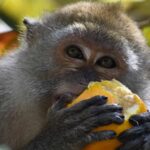Science is always changing as new research and technology bring us closer to the truth, so misconceptions are common. We’ve gathered 9 well-known scientific “facts” that most people still believe but have been proven false.

Cracking Your Knuckles Causes Arthritis
No, cracking your knuckles doesn’t significantly increase your chance of developing arthritis in your hands, as Harvard Health reveals. The noise results from bubbles bursting in the lubricating fluid surrounding each joint. But they don’t recommend it anyway because “knuckle crackers” exhibit a reduced ability to “grip” objects.
Goldfish Have Terrible Memories
Contrary to popular belief, goldfish have good memories and can perform learned tasks (like navigating to and from a place within their tank) for a food reward. The BBC states that Oxford University researchers concluded that goldfish had memories far longer than a few seconds.
Lightning Never Strikes the Same Place Twice
The opposite is actually true! The Weather Network reports, “While the odds of being struck by lightning are low, the chances of lightning striking the same place twice are high.” Because certain “spots” are higher or more conductive, they may be struck multiple times over time or even in a single storm.
Vaccines Cause Autism
The so-called “scientist” who made this claim was trying to discredit a specific vaccine so he could sell his own version but inadvertently started a myth about all vaccines. The Mayo Clinic confirms that vaccination is a safe and effective way to protect children from deadly diseases like Measles and Polio.
Bananas Grow on Trees
I’m sorry, but no, they don’t! Banana plants are not botanically classified as trees but as large herbaceous plants called palms. Although sometimes called “palm trees,” palms are more accurately described as giant, woody herbs, more closely related to grass than to trees.
Dogs See in Black and White
The Big Think reveals that “dogs lack some of the light receptors in their eyes that allow human beings to see certain colors, particularly in the red and green range. But canines can still see yellow and blue.” So, if you’re making your dog a birthday card, ditch the monochrome designs and splash some yellow on there!
Sugar Causes Hyperactivity in Children
While parents may like to use this as an excuse to restrict sweet treats, WebMD states that not one study on the subject has found a significant link between sugar consumption and hyperactivity. However, science can agree that sugar still isn’t great for their teeth.
Glass Is a Slow-Moving Liquid
New Scientist says that chemists classify glass as neither a liquid nor a solid but something in between these two states of matter. They call it “an amorphous solid” because its structure isn’t as rigid as a true solid, but its atoms cannot move around as freely as those in a liquid. Put simply, it’s weird!
Eating at Night Makes You Fat
Fear not, midnight snackers; as long as you aren’t eating extra calories at night, the time you eat doesn’t significantly affect weight gain. The most important factor in weight regulation is your daily, overall calorie consumption- not the time of day you chow down!
Your Tongue Has a “Taste Map”
Many of us learned that different areas of the tongue respond to different tastes- sweet, salty, bitter, and sour. The Smithsonian Institute reports that taste receptors are actually distributed evenly- so you can taste the sourness of a lemon slice no matter where you squeeze it on your tongue!







